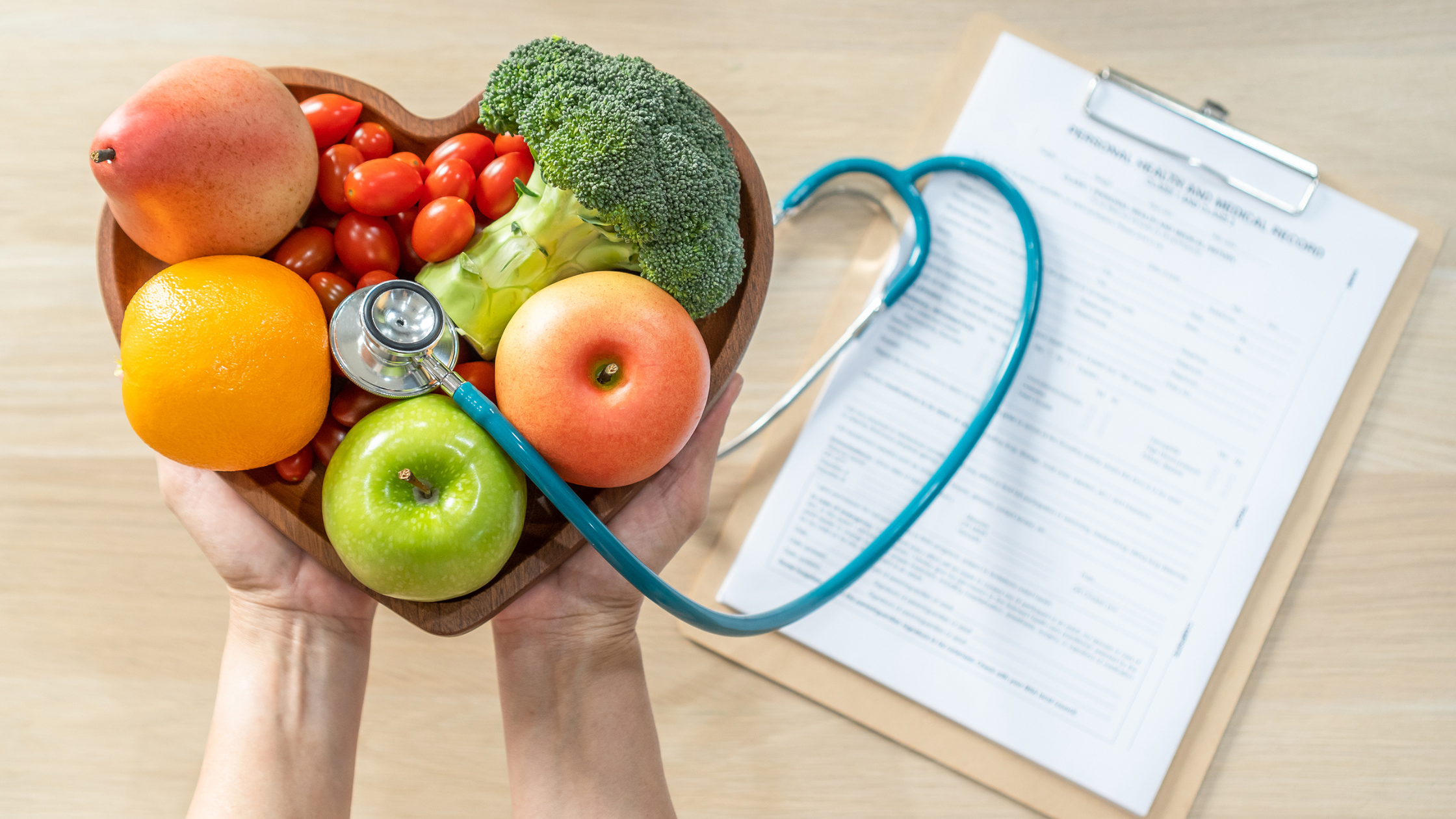Is Cycle Syncing Legit or Just Trendy Diet Culture?
Cycle syncing has become increasingly popular, especially on the wellness side of TikTok. There are even cycle syncing “coaches” and “experts” whose social media accounts are dedicated to sharing cycle syncing tips and tricks.
But is cycle syncing legitimate? Or is it just another diet culture trend?
If you’re new here, hello and welcome! My name is Hannah and I am a non-diet dietitian here to help you improve your relationship with your food and finally find food freedom.
In this blog we will cover:
What is cycle syncing?
The phases of the menstrual cycle
The claimed benefits of cycle syncing
How to cycle sync
Potential issues with cycle syncing
What is cycle syncing?
Cycle syncing is refers to the practice of modifying your diet and workouts based on the phase of your menstrual cycle. It is founded on the idea that people with uteruses have ever-changing hormone fluctuations depending on which phase of their menstrual cycle they are in.
Many people have found cycle syncing to be life changing because it has allowed them to work with their body rather than against it. Many have also stated that they never learned about the phases of their menstrual cycle before and doing so has really helped them understand how their own body works and why they feel the way they do during various parts of the month.
This general concept has been around for some time, but the term “cycle syncing” is newer and definitely quite trendy. Cycle syncing “experts”, “coaches”, and “gurus” are revolving their content and businesses around serving those looking to learn more about tailoring their diet and exercise habits to their cycle.
A quick side note - I suggest relying on an OBGYN or gynecologist for evidence-based information about your menstrual cycle. Unfortunately, many of the cycle syncing “coaches” have no medical background and are operating their business only on personal experience that may not work for you. While cycle syncing may be productive for some (and not for others, as we’ll discuss in this post), “gurus” and “coaches” are not licensed to provide medical advice.
Phases of the menstrual cycle
Menstruating peoples’ hormones fluctuate on roughly a monthly basis, while non-menstruating individuals’ hormones oscillate in a 24 hour cycle.
The 4 phases of the menstrual cycle are:
Menstruation
Follicular phase
Ovulatory phase
Luteal phase
The menstrual cycle is generally about 28 days in length, but can range anywhere from 21-35 days. There are also many circumstances that can alter the cycle, including stress, birth control, and chronic conditions such as PCOS and endometriosis. Of course, pregnancy would also lead to changes in this cycle.
Everyone’s menstrual cycle is a little different and you may even find that your cycle varies from month to month. This is just a testament to the uniqueness and complexity of the human body!
Menstruation
This is the phase you are likely most familiar with. Menstruation is the phase in which you are on your period. The menstruation phase typically lasts about 3-7 days.
During this phase you may feel like energy levels and motivation are low, cravings increase, and you feel more emotional.
Follicular phase
The follicular phase comes after your period and lasts for approximately 10-14 days. Energy levels tend to rise during this phase and you may feel more creative, motivated, and excited.
Ovulatory phase
This phase is also known as ovulation. The ovulatory phase is the phase where we are the most fertile and can get pregnant (under normal circumstances).
During this phase we tend to feel the most social and confident. There might be a desire to hang out with other people during this phase.
The ovulatory phase only last for 1-3 days.
Luteal phase
After ovulation, the luteal phase lasts until we get our period again. The luteal phase lasts for about 10-14 days. The last week of the luteal phase may be when you experience PMS (premenstrual syndrome) symptoms.
During the luteal phase our energy levels start to decrease and we feel more tired and withdrawn.
Claimed benefits of cycle syncing
Cycle syncing is claimed to have many benefits, including:
More regular periods
Gentler PMS
More connection to your body and its needs
Less mood swings
More effective workouts
Fertility support (knowing when or when not to conceive)
How to start cycle syncing
In theory, cycle syncing is quite simple. The experts suggest tracking your cycle using a cycle syncing app or a journal to better understand which phase you are in. Some even suggest using basal thermometers daily, as our internal temperature changes depending on the phase of our cycle we are in.
Once you have determined the estimated length of each phases of your cycle, it is suggested that you adapt your food choices and workouts to each phase.
Cycle syncing your diet
There are various methods of eating for your menstrual cycle. There is no universal menstrual cycle diet.
There are various resources available outlining which foods are best to eat during each phase of your cycle. I have even seen charts outlining the different food groups and which ones to eat and avoid during each phase.
I am not going to include lists of “luteal phase foods” and “follicular phase foods” in this blog post because I find that these types of lists can result in food restriction. Such lists may make people feel as if they can not eat certain foods that they want to eat just because they are in a particular phase of their cycle.
It is true that certain nutrients are needed during the various phases of the cycle. For example, iron is especially important during menstruation. This does not mean that you can only eat iron-rich foods during your period. Plus, if you eat enough iron in general, your body probably has plenty of iron stores in case you have a day or two with lower iron intake.
The bottom line here is that nutrition is important, but there is no need to stress about every nutrient during every phase of your cycle.
Cycle syncing your workouts
When it comes to exercise, cycle syncers suggest modifying your workout routine based on your energy level.
During menstruation, if you feel fatigued and low energy but still want to move, you might try yoga, walking, light stretching. I also want to note that it is more than okay to rest during this phase and al phases!
When you are in your follicular phase and energy levels rise as estrogen levels increase, this might be a good time for cardio, Zumba, etc.
The ovulatory phase tends to be when we feel our best. This might be the best time for more high-intensity exercise like HIIT or heavy weight training.
During the luteal phase, you may feel more anxious and tired as hormone levels fall. Yoga, pilates, or meditation may feel good during this phase.
Again, I want to remind you that it is okay to rest during any and all of the phases. It is also okay to do other forms of movement that are not listed above. Only you know what will feel best for your body.
Potential issues with cycle syncing
Although cycle syncing appears to be a simple practice, there is the potential for it to lead to disordered eating and exercise behaviors.
Inflexible food and exercise habits
As a dietitian, the most glaring issue I see with cycle syncing is when it leads to people being far too strict with the foods they will or won’t eat. I also have seen people only do particular types of exercise based on the phase of the cycle they are in.
Once again, listening to your body does not involve following strict rules or guidelines. It is okay to eat foods that don’t “align” with the phase you are in and it is okay to do a workout that is different than what you are “supposed” to do.
Difficulty implementing with irregular cycles
If you have an irregular cycle, cycle syncing may feel near impossible to implement. You may have no idea when you are in your luteal phase or when you are ovulating because it changes every month. Tracking your cycle with an app may help, but this can still be difficult if your cycle is inconsistent.
This is again where I suggest listening to your body without worrying too much about the phases and what they mean for your diet and exercise.
If you are trying to get pregnant (or avoid pregnancy) and you need to know the phases of your cycle for that reason, work with an OBGYN or gynecologist to discuss alternate methods of assessing your body’s hormonal shifts.
Drastic claims
I have seen various claims that cycle syncing can cure PMS, hormone imbalances, bloating, etc. While cycle syncing may help with some of these things, we cannot claim that it will “cure” them. Some people may be fully in tune with their cycle and listening to their body and still struggle with bloating or hormone imbalances. These issues can be caused by conditions that have nothing to do with the menstrual cycle.
How to practice non-diet cycle syncing
Listen to your body every day of your cycle. Participate in the type of movement that you think would feel best, regardless of whether it is the “right” type of movement based on the menstrual cycle phase you are in. You also have permission to rest, even if you are in your follicular and ovulatory phases.
I also recommend focusing on gentle nutrition. Gentle nutrition is the tenth principle of intuitive eating and involves eating foods that are nourishing and make us feel good while also allowing for less nutritious foods that promote mental satisfaction. All foods can fit and you do not need to strictly follow cycle syncing food lists.
It may also help to think beyond the nutrient quality of foods. After all, food is more than fuel. During menstruation, for example, it may feel good to enjoy warm and soft foods as they may bring you comfort. Perhaps you crave sweet versus salty foods during particular phases. Food can serve you in more ways than one!
Bottom line
Cycle syncing is the practice of tailoring your diet and workout routine to the phases of the menstrual cycle. Cycle syncing is claimed to help reduce PMS symptoms, improve productivity, and support more effective workouts.
I do totally agree with listening to your body and being flexible rather than following a cookie cutter meal plan and workout routine. But I can see how some people may take cycle syncing to the point of being inflexible. Allow for rest when your body asks for it and try to remember that only you get to determine which foods would make you feel good.
What are your thoughts on cycle syncing? Leave them in the comments below!
Learn more
Featured podcast episodes
Want more help on your intuitive eating journey?
Join my signature membership to become part of a community of ex-dieters working towards food freedom and making peace with food so they no longer need to cut out their favorite foods.

































